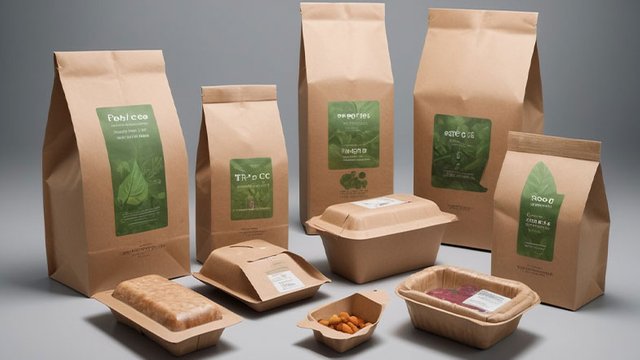Embracing Eco-Friendly Takeaway Boxes

In today's environmentally conscious world, businesses are increasingly seeking food packaging solutions that not only meet their operational needs but also align with sustainability goals. One significant aspect of this shift is the adoption of eco-friendly takeaway boxes. These boxes offer a range of benefits, from reducing environmental impact to addressing health concerns associated with traditional packaging materials.
The Problem with Traditional Takeaway Boxes
Traditional takeaway boxes, often made from non-biodegradable materials such as polystyrene or plastic, pose significant environmental challenges. These materials take centuries to decompose, contributing to pollution and harming wildlife. Moreover, they can leach harmful chemicals into food, raising concerns about human health.
Benefits of Eco-Friendly Takeaway Boxes
Eco-friendly takeaway boxes are typically made from biodegradable, compostable, or recycled materials. These materials break down naturally, reducing the burden on landfills and minimizing environmental pollution. By opting for eco-friendly packaging, businesses can demonstrate their commitment to sustainability and reduce their carbon footprint.
Health Benefits
Unlike traditional takeaway boxes, which may contain harmful chemicals, eco-friendly alternatives are free from toxins and additives. This ensures that food remains safe and uncontaminated, promoting consumer health and well-being. Additionally, some eco-friendly materials offer superior insulation properties, keeping food fresher for longer periods.
Types of Eco-Friendly Packaging Solutions
Businesses have a variety of eco-friendly options to choose from when selecting takeaway boxes:
Biodegradable Materials
Biodegradable materials, such as cardboard or paper-based products, break down naturally over time, returning to the earth without causing harm to the environment.
Compostable Materials
Compostable materials, such as PLA (polylactic acid) or bagasse (sugarcane fiber), can be composted along with organic waste, turning into nutrient-rich soil for plants.
Recycled Materials
Using recycled materials, such as recycled paper or plastic, reduces the need for virgin resources and minimizes waste. These materials can be recycled again after use, closing the loop on the packaging lifecycle.
Eco-Friendly Packaging Innovations
Innovations in eco-friendly packaging continue to evolve, offering even more sustainable solutions:
Plant-Based Plastics
Plant-based plastics, derived from renewable resources like corn or sugarcane, offer similar properties to traditional plastics but with a significantly lower environmental impact.
Edible Packaging
Edible packaging, made from natural ingredients such as seaweed or starch, provides a unique and sustainable way to package food, eliminating waste altogether.
Cost Considerations
While the initial investment in eco-friendly packaging may be higher than traditional options, businesses can benefit from long-term cost savings. Reduced waste disposal fees, positive brand reputation, and potential marketing advantages can offset the initial costs over time.
Consumer Perception and Demand
Consumer preferences are shifting towards sustainable products, including eco-friendly packaging. Businesses that prioritize environmental responsibility can attract and retain customers who value sustainability.
Marketing Strategies for Eco-Friendly Packaging
To capitalize on the growing demand for eco-friendly packaging, businesses can employ various marketing strategies:
Emphasizing Sustainability
Highlighting the eco-friendly attributes of packaging can resonate with environmentally conscious consumers and differentiate products from competitors.
Highlighting Health Benefits
Communicating the health benefits of eco-friendly packaging, such as toxin-free materials and fresher food, can appeal to health-conscious consumers.
Case Studies
Several businesses have successfully embraced eco-friendly packaging solutions, demonstrating the feasibility and benefits of sustainable practices in the food industry.
Challenges and Solutions
Despite the advantages of eco-friendly packaging, businesses may encounter challenges such as resistance to change and sourcing reliable suppliers. However, with proper planning and investment, these challenges can be overcome.
Future Trends
As technology advances and environmental concerns become more prominent, the future of eco-friendly packaging looks promising. Government regulations and incentives may further drive adoption, creating opportunities for innovation and growth.
Conclusion
Eco-friendly takeaway boxes offer a sustainable solution to the environmental and health challenges associated with traditional packaging materials. By embracing eco-friendly options, businesses can reduce their environmental footprint, enhance consumer trust, and contribute to a healthier planet.